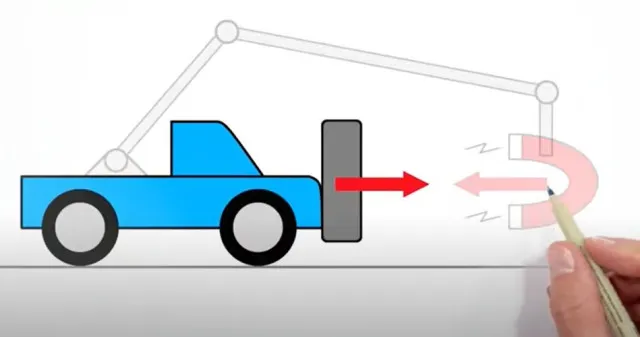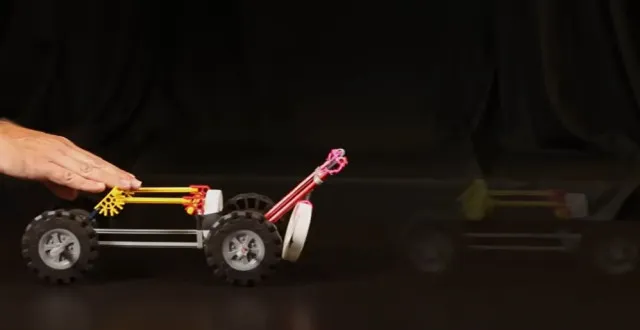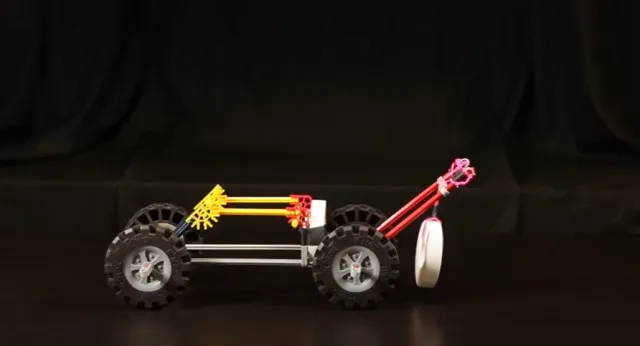The idea of a magnet-powered truck has captured the imaginations of many online users, sparking conversations and debate. A recent viral post on Twitter, shared by the user @NoContextHumans, has left viewers perplexed, asking for one good reason why a magnet truck wouldn’t work. The seemingly simple concept of attaching a magnet to the front of a truck and using another magnet to propel it forward sounds innovative, but the reality lies in the fundamentals of physics. In this article, we’ll explore why the magnet truck concept is flawed, and dive into the scientific principles that explain why it won’t get off the ground.
The Magnet Truck Concept: A Simple but Misleading Idea

The question raised on social media was: “Why can’t we use magnets to push a truck forward?” The idea suggests that by attaching one magnet to the front of a truck and using another to pull it forward, we could create a magnet-powered vehicle. At first glance, this sounds plausible—magnets have a strong attractive force, after all. But when you look at the concept through the lens of physics, it quickly falls apart.
Many social media users, unfamiliar with the scientific laws at play, admitted confusion. Some even joked about giving the concept to engineering students as a final exam problem. While the conversation was entertaining, the answer to why a magnet truck won’t work is grounded in well-established physical principles.
Why Magnets Can’t Propel a Truck: A Lesson in Physics
So why exactly does this idea fail? The answer lies in basic physics—specifically, Newton’s laws of motion and the principles of magnetism.
Newton’s First Law of Motion: The Need for an External Force
Newton’s First Law, often known as the law of inertia, states that an object at rest will remain at rest unless acted upon by an external force. For a vehicle to move, there needs to be an external force pushing or pulling it. In the case of a magnet truck, the magnets are part of the same system. Attaching one magnet to the truck and using another to pull it doesn’t count as an external force. The truck would essentially be trying to move itself, which goes against the basic laws of motion.
Imagine trying to push a car from inside the car itself—it won’t move because you’re not applying an external force. The same principle applies to the magnet truck idea.
Newton’s Third Law of Motion: Equal and Opposite Forces
Newton’s Third Law states that for every action, there is an equal and opposite reaction. If you attempt to use a magnet attached to the truck to pull it forward, the other magnet will pull back with equal force. Since both magnets are part of the same system, the forces cancel each other out, and no movement occurs. Essentially, the magnets are locked in a tug of war, but the truck remains stationary because there’s no external force acting on it.
Perpetual Motion: The Dream That Can’t Be Realized
The concept of a magnet truck also taps into the idea of perpetual motion—a machine that could run indefinitely without the need for an external power source. However, perpetual motion machines are impossible according to the laws of physics, specifically the laws of thermodynamics. Energy cannot be created or destroyed, only transformed. In the case of the magnet truck, once the magnets are in place, there’s no new energy being added to keep the vehicle moving. Even if the magnets exert a force, the truck won’t move because it’s part of a closed system without any external energy input.
The Rubber Band Analogy: Understanding the Problem with Magnet Trucks

To help illustrate why the magnet truck can’t work, let’s consider a different analogy: pulling a car using a rubber band. Imagine attaching a large rubber band to the front of a car and then standing in front of it, pulling the band to create tension. This would exert an external force on the car, potentially propelling it forward.
Now, imagine sitting inside the car and trying to pull the same rubber band forward by reaching out the sunroof. In this scenario, you’re still connected to the car, so the force you’re applying is internal. The car doesn’t move because the tension in the rubber band is canceled out by your position in the same system. This is exactly what happens with the magnet truck—the magnets are part of the same system and therefore can’t create the external force necessary to move the truck.
Magnets and Motion: The Limitations of Magnetic Force

While magnets have strong attractive and repulsive forces, they cannot be used to generate motion in the way suggested by the magnet truck concept. Magnets work by creating a magnetic field that interacts with other objects, but for a truck to move, there must be a way to transfer force externally, like how an engine uses combustion to drive a car forward.
Magnets can certainly be used in other applications, such as magnetic levitation (maglev) trains, where they reduce friction by allowing the train to hover above the tracks. However, even maglev trains require external power sources to drive them forward. Simply relying on magnets alone to power a vehicle would be akin to trying to lift yourself by your own shoelaces—an impossible task because you’re part of the system that needs to be lifted.
Internet Reactions: Humor Meets Scientific Curiosity
The viral Twitter discussion around the magnet truck brought out a range of responses. Some users jokingly speculated about the engineering challenges, while others pointed out the absurdity of the concept. One person cleverly commented, “This is like pulling your own shirt to try and make yourself move.” Another noted that while the idea was fun to think about, it ultimately falls apart when you apply even basic principles of physics.

Some commenters even considered using the problem as an extra credit question for engineering students, a way to challenge them to think critically about why the concept wouldn’t work. It was clear that while the idea was entertaining, the general consensus was that magnets alone wouldn’t get a truck moving any time soon.
Conclusion: Why the Magnet Truck Won’t Ever Hit the Road
At first glance, the idea of a magnet-powered truck may seem like an exciting innovation. However, when we apply the laws of physics—specifically Newton’s laws of motion and the concept of external forces—the idea quickly unravels. Magnets alone cannot propel a truck because they cannot create the external force necessary to move it.
As much as the concept intrigues those curious minds on social media, the magnet truck remains an impossible dream. For now, we’ll have to stick with engines, electricity, and fuel to keep our vehicles moving forward, leaving the magnet truck in the realm of hypothetical—and humorous—thought experiments.